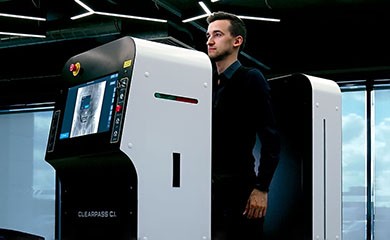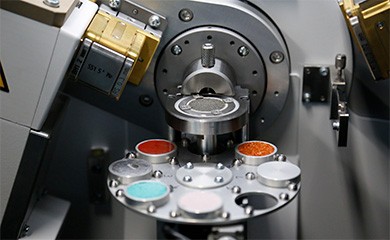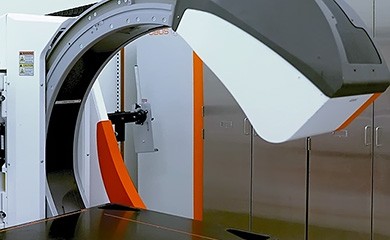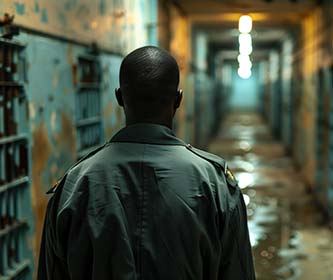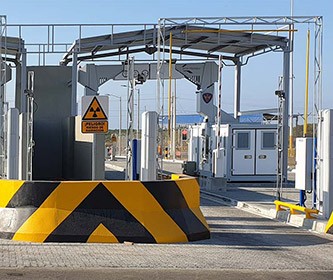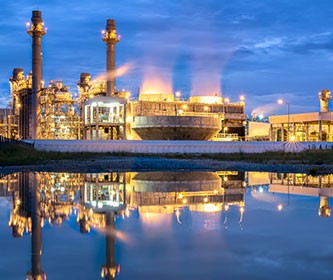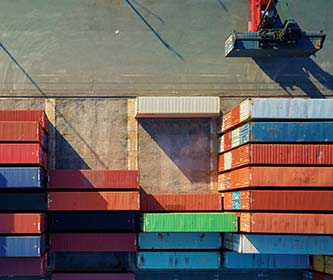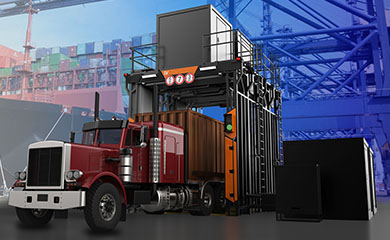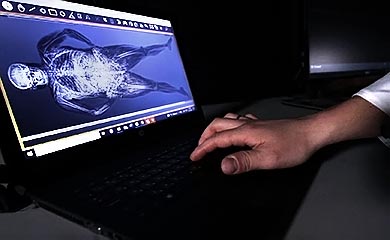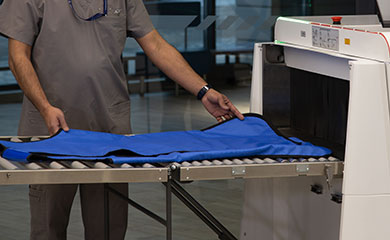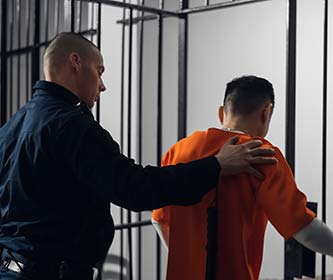

04 November 2025
Mobile vs. Fixed Installations: Which Security Screening X-ray Solutions Fit Your Point‑of‑Entry?
The trade-off of throughput, detection performance, footprint and budget must be accounted for when securing a point of entry. At LINEV Systems®, we manufacture both mobile and stationary security screening X-ray solutions for people, baggage & parcels, and cargo & vehicles. Making the right decision can increase the interdiction rate, reduce queues, and lower the overall cost of ownership in the long term. We will compare our mobile and fixed products across the three screening categories that security teams manage every day.
Our drive-through system is a high-energy imaging system with a hydraulic relocation kit that enables quick relocation. It can be offloaded without a crane, has an inbuilt diesel generator and can be operational in less than an hour. In the case of surge operations, temporary checkpoints or contingency coverage, this mobile unit provides up to 100 vehicles per hour with penetration of up to 320 mm of steel and lateral projection color-coded coverage.
Stationary: DTP 7500LV
A fixed lane is helpful for land borders, seaports, or cargo terminals that always have a lot of traffic. The DTP 7500LV can screen up to 150 vehicles per hour using the same high-energy single-color coding and a smaller exclusion zone. Permanent lanes let you pre-stage, design with driver control, and connect your VMS/PSIM and manifest systems reliably.
The operations lesson is clear. Choose the DTP 7500LVR when you need to set something up quickly, have your own power, and cover a lot of ground. Choose the DTP 7500LV if you need high throughput in a single location and want the lowest cost per scan and consistent image quality. Most security teams may choose to have a mix of the two: dedicated lanes for the highest throughput and a floating mobile unit that may be used for secondary checks, distant crossings, or incident response. More and more people are using this hybrid method for security screening X-ray solutions.
CLEARPASS Ci is a single-module people scanner, portable, and used for selective screening with high image quality, and fast scan speeds from about two to four seconds. It traverses typical doorways, installs easily with a plug-and-play connection, and performs well in prisons, temporary command posts, courthouses, pop-ups, and event surge points. It comes with automated dose selection and contraband-detection software, there is an option of a fingerprint or passport reader, and it is a complete mobile package.
Stationary: CLEARPASS full‑body
For permanently deployed checkpoints with high pedestrian traffic (e.g., border posts, government, and intake zones in the prison). Our CLEARPASS full-body system offers very small dose rates, lean SOPs, queuing optimization, and network integration with your SOC. Together with CLEARPASS DMS, you are able to control accounts, pictures and aggregate exposure in a fleet of devices, either portable or fixed. That unified control is a hallmark of compliant, scalable security screening X-ray solutions.
CLEARPASS Ci will be the most adaptable asset in case it is necessary to deploy your mission on a regular basis, to conduct a specific part of the torso or abdomen, or a temporary screening location. When you need a consistent flow of employees, guests, or commuters using the same entrance daily, the non-portable CLEARPASS full-body offers the quickest, most reliable scans.
The tight conveyor X-ray fits in perfectly when screening secondarily or the provision of temporary posts or rotating coverage at entrance points. It has a small footprint and can be set up within a short time, making it suitable to screen at hotels, schools, stadiums, and pop-ups.
Stationary: BV 100100TB
For permanent facilities with big objects and large volumes, a fixed twin-generator tunnel of type BV 100100TB is more suitable. It provides better penetration and image quality, as well as the ergonomics of a heavy-load bay. It goes hand in hand with conveyors, divesting tables, and alarm-resolution stations to capitalize on logistics and border facility throughputs.
If you require mobile services or have multiple building entrances, seasonal projects, or joint facilities, the BV 6045 will provide the flexibility you need. The BV 100100TB better suits cases where your operation requires continuous heavy-duty screening of larger items with attached lanes and operator booths. Together, they create a cohesive, multi-lane strategy for baggage and parcels within a broader portfolio of security screening X-ray solutions.
Footprint and civil works may be determined. Pads, barriers and conduit are needed in a fixed configuration, but mobile solutions need minimal site preparation and can be operational in hours. The TCO is a factor of utilisation. The fixed lanes would be likely to cost less per scan at high steady volumes in one location, and the mobile systems would be competitive when assets are shared by site, where permitting is sluggish, or where imposing CAPEX cannot be afforded on construction. The calculus also includes staffing and SOPS. Fixed checkpoints standardize the workflows, reduce the training cycles, and mobile deployments can be characterized by cross-trained teams having the ability to cope with the variable layouts.
Safety and compliance are required. Mobile and fixed platforms are both designed to be radiation safe, with a fixed system concentrating barriers and signs. Mobile systems use smart interlocks, geo-fenced exclusion zones and automatic dose limits. The issue of systems integration is also relevant. Our products have the following systems: License Plate Recognition / Automatic Number Plate Recognition, Under-Vehicle Inspection System, Video Management System / Physical Security Information Management, and manifest systems. Mobile units send images over secure LTE/5G or satellite to your SOC, and when bandwidth is limited, AI filters images. Lastly, there is continuity of operations. Fixed operations combine maximum time and redundancy, and mobile units offer contingency services during service or emergency, extending your area of operation.
Cargo and Vehicle Inspection: Surge-Ready Mobility vs. High-Volume Permanence
Mobile: DTP 7500LVROur drive-through system is a high-energy imaging system with a hydraulic relocation kit that enables quick relocation. It can be offloaded without a crane, has an inbuilt diesel generator and can be operational in less than an hour. In the case of surge operations, temporary checkpoints or contingency coverage, this mobile unit provides up to 100 vehicles per hour with penetration of up to 320 mm of steel and lateral projection color-coded coverage.
Stationary: DTP 7500LV
A fixed lane is helpful for land borders, seaports, or cargo terminals that always have a lot of traffic. The DTP 7500LV can screen up to 150 vehicles per hour using the same high-energy single-color coding and a smaller exclusion zone. Permanent lanes let you pre-stage, design with driver control, and connect your VMS/PSIM and manifest systems reliably.
The operations lesson is clear. Choose the DTP 7500LVR when you need to set something up quickly, have your own power, and cover a lot of ground. Choose the DTP 7500LV if you need high throughput in a single location and want the lowest cost per scan and consistent image quality. Most security teams may choose to have a mix of the two: dedicated lanes for the highest throughput and a floating mobile unit that may be used for secondary checks, distant crossings, or incident response. More and more people are using this hybrid method for security screening X-ray solutions.
People Screening: Portable Precision vs. High‑Footfall Stations
Mobile: CLEARPASS CiCLEARPASS Ci is a single-module people scanner, portable, and used for selective screening with high image quality, and fast scan speeds from about two to four seconds. It traverses typical doorways, installs easily with a plug-and-play connection, and performs well in prisons, temporary command posts, courthouses, pop-ups, and event surge points. It comes with automated dose selection and contraband-detection software, there is an option of a fingerprint or passport reader, and it is a complete mobile package.
Stationary: CLEARPASS full‑body
For permanently deployed checkpoints with high pedestrian traffic (e.g., border posts, government, and intake zones in the prison). Our CLEARPASS full-body system offers very small dose rates, lean SOPs, queuing optimization, and network integration with your SOC. Together with CLEARPASS DMS, you are able to control accounts, pictures and aggregate exposure in a fleet of devices, either portable or fixed. That unified control is a hallmark of compliant, scalable security screening X-ray solutions.
CLEARPASS Ci will be the most adaptable asset in case it is necessary to deploy your mission on a regular basis, to conduct a specific part of the torso or abdomen, or a temporary screening location. When you need a consistent flow of employees, guests, or commuters using the same entrance daily, the non-portable CLEARPASS full-body offers the quickest, most reliable scans.
Baggage and Parcel Screening: Pop‑Up Security Desks vs. Integrated Logistics Bays
Mobile: BV 6045The tight conveyor X-ray fits in perfectly when screening secondarily or the provision of temporary posts or rotating coverage at entrance points. It has a small footprint and can be set up within a short time, making it suitable to screen at hotels, schools, stadiums, and pop-ups.
Stationary: BV 100100TB
For permanent facilities with big objects and large volumes, a fixed twin-generator tunnel of type BV 100100TB is more suitable. It provides better penetration and image quality, as well as the ergonomics of a heavy-load bay. It goes hand in hand with conveyors, divesting tables, and alarm-resolution stations to capitalize on logistics and border facility throughputs.
If you require mobile services or have multiple building entrances, seasonal projects, or joint facilities, the BV 6045 will provide the flexibility you need. The BV 100100TB better suits cases where your operation requires continuous heavy-duty screening of larger items with attached lanes and operator booths. Together, they create a cohesive, multi-lane strategy for baggage and parcels within a broader portfolio of security screening X-ray solutions.
Nine Decision Factors to Guide Your Choice
The first factor is the mission profile. Fixed infrastructure is best suited in case you have a permanent operating environment that operates all year long, whereas mobility is better suited for cases where you have a surge, a remote or temporary mission. Next are the throughput and lane geometry. Big lanes permit engineered queuing, pre-staging, and fixed angles to maximize vehicles-per-hour or bags-per-hour, which mobile deployments have taken as secondary concerns. Fixed platforms can give the best situation of detection performance and image stability due to foundations and conditioned power.Footprint and civil works may be determined. Pads, barriers and conduit are needed in a fixed configuration, but mobile solutions need minimal site preparation and can be operational in hours. The TCO is a factor of utilisation. The fixed lanes would be likely to cost less per scan at high steady volumes in one location, and the mobile systems would be competitive when assets are shared by site, where permitting is sluggish, or where imposing CAPEX cannot be afforded on construction. The calculus also includes staffing and SOPS. Fixed checkpoints standardize the workflows, reduce the training cycles, and mobile deployments can be characterized by cross-trained teams having the ability to cope with the variable layouts.
Safety and compliance are required. Mobile and fixed platforms are both designed to be radiation safe, with a fixed system concentrating barriers and signs. Mobile systems use smart interlocks, geo-fenced exclusion zones and automatic dose limits. The issue of systems integration is also relevant. Our products have the following systems: License Plate Recognition / Automatic Number Plate Recognition, Under-Vehicle Inspection System, Video Management System / Physical Security Information Management, and manifest systems. Mobile units send images over secure LTE/5G or satellite to your SOC, and when bandwidth is limited, AI filters images. Lastly, there is continuity of operations. Fixed operations combine maximum time and redundancy, and mobile units offer contingency services during service or emergency, extending your area of operation.
